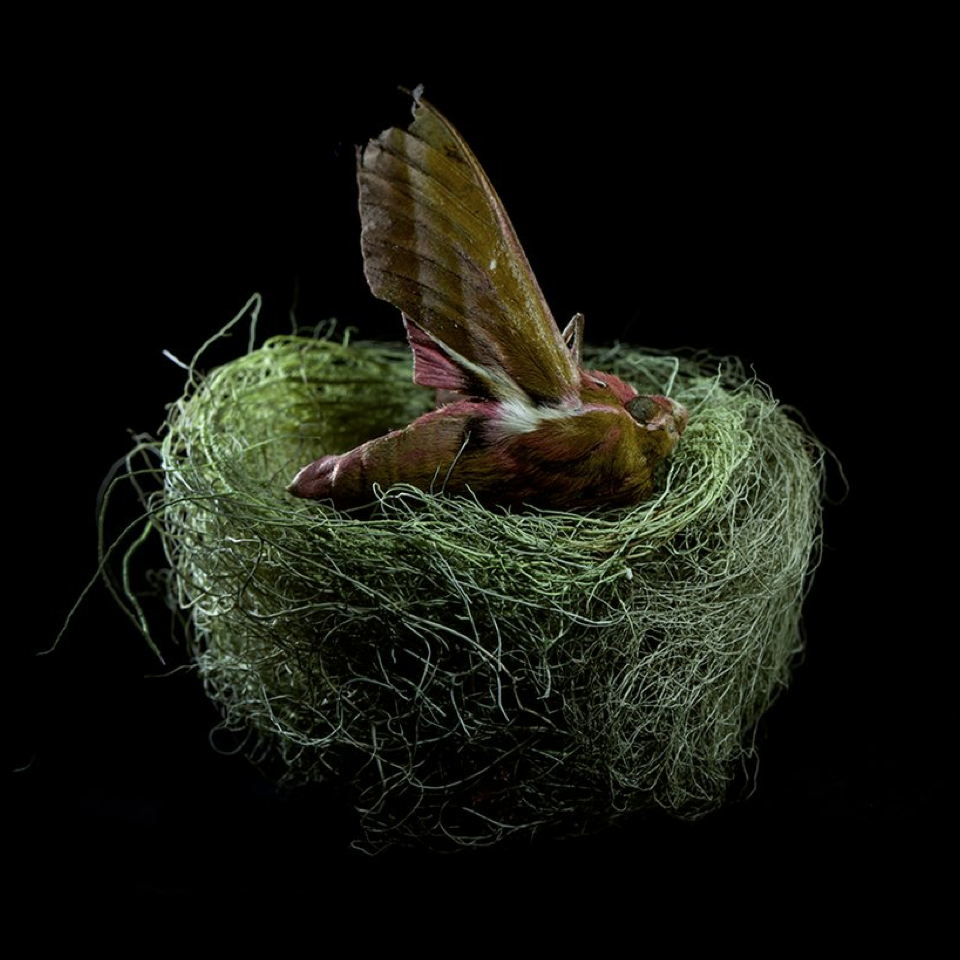The Poetics of thanatology
An exploratory essay on photography, empathy and death
DOI:
https://doi.org/10.7577/formakademisk.3539Abstract
This essay has been a way of interpreting my artistic praxis. The starting point takes place in my own artistic work, and a series of photographs entitled The Poetics of Thanatology. The text reflects on and examines themes that are potentially touched upon through the visual language of photographs and the creative process. I explore the possible connections that exist between an event in my childhood, death and photography. The anthropocentric approach to reality is deeply rooted in our culture and has created hierarchical relationships – We (humans) and the They (non-human organisms). Through still life photography of dead plants and insects, I examine the human experience of empathy in relation to non-human organisms. I see my practical work in the photo studio as a vital room for critical reflection and as a room for irreplaceable, meaningful, and slow sensory experiences. These experiences have challenged both my own and my art students´ anthropocentric approach to the world.
References
Abram, D. (2010). Becoming Animal : An Earthly Cosmology. [Kindle]. First Vintage Books Edition.
Abram, D. (2017). The spell of the sensuous : perception and language in a more-than-human world. Vintage Books.
Arendt, H., & Elon, A. (2006). Eichmann in Jerusalem : a report on the banality of evil. Penguin Books.
Atsma, A.J. (2000-2019). Thanatos, The Theoi Project – Greek Mythology. https://www.theoi.com/Daimon/Thanatos.html
Barthes, & Howard, R. (2000). Camera lucida : reflections on photography. Vintage Books.
Bu, K., & Biong, T. (2007). Kunsten å bruke følelser: 17 samtaler fra hjertet [The art of using emotions: 17 conversations from the heart](Vol. 49, Flux). Flux forlag.
Grelland, H. (2018). Møtet mellom dyr og mennesker: En filosofisk studie. I B. Berget, E. Krøger, A. Thorød & B. Braastad (Red.), Antrozoologi: Samspill mellom dyr og menneske [Anthrozoology: Interaction between animals and humans](p. 21-28). Universitetsforlaget.
Hall, M. (2011). Plant as Person. A philosophical botany. State Univerity of New York Press.
Linkman, A. (2011). Photography and Death. Reaction Books.
Næss, A. (2002). Life's Philosophy. University of Georgia Press.
Olechnicki, K. (2013). Uwagi o kulturze wizualnej w ujęciu socjologiczno-antropologicznym [Notes on visual culture in sociological and anthropological context]. DYSKURS: Pismo Naukowo-Artystyczne ASP, 16, 6-16. http://cejsh.icm.edu.pl/cejsh/element/bwmeta1.element.desklight-dbb41a8a-9b38-40fa-97f5-84a78f45b0a7
Sontag, S. (1997). On photography. Penguin.
Wandersee, J. H., & Schussler, E. E. (2001). Toward a theory of plant blindness. Plant Science Bulletin, 47(1), 2-9. https://cms.botany.org/userdata/IssueArchive/issues/originalfile/PSB_2001_47_1.pdf https://botany.org/bsa/psb/2001/psb47-1.pdf
Wikimedia Commons. (n.d.). Victorian era post-mortem family portrait of parents with their deceased daughter [photography]. Wikipedia. https://nn.wikipedia.org/wiki/Fil:Victorian_era_post-mortem_family_portrait_of_parents_with_their_deceased_daughter.jpg
Øverenget, E. (2003). Eksistens: En bok om frihet, angst og død [Existence: A book about freedom, anxiety and death]. Kagge.

Downloads
Published
How to Cite
Issue
Section
License
Copyright (c) 2020 Jadwiga Blaszczyk-Podowska

This work is licensed under a Creative Commons Attribution-NoDerivatives 4.0 International License.
Authors who publish with this journal agree to the following terms:
- Authors retain copyright and grant the journal right of first publication with the work simultaneously licensed under a Creative Commons Attribution 4.0 License that allows others to share the work with an acknowledgement of the work's authorship and initial publication in this journal.
- Authors are able to enter into separate, additional contractual arrangements for the non-exclusive distribution of the journal's published version of the work (e.g., post it to an institutional repository or publish it in a book), with an acknowledgement of its initial publication in this journal.
- Authors are permitted and encouraged to post their work online (e.g., in institutional repositories or on their website) prior to and during the submission process, as it can lead to productive exchanges, as well as earlier and greater citation of published work (See The Effect of Open Access).
- The author(s) must manage their economic reproduction rights to any third party.
- The journal makes no financial or other compensation for submissions, unless a separate agreement regarding this matter has been made with the author(s).
- The journal is obliged to archive the manuscript (including metadata) in its originally published digital form for at least a suitable amount of time in which the manuscript can be accessed via a long-term archive for digital material, such as in the Norwegian universities’ institutional archives within the framework of the NORA partnership.
The material will be published OpenAccess with a Creative Commons 4.0 License which allows anyone to read, share and adapt the content, even commercially under the licence terms:
This work needs to be appropriately attributed/credited, a link must be provided to the CC-BY 4.0 licence, and changes made need to be indicated in a reasonable manner, but not in any way that suggests that the licensor endorses you or your use.



